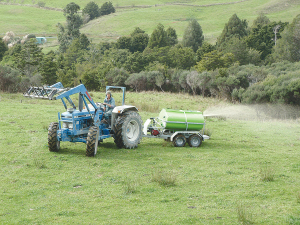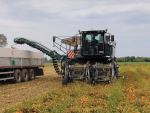A foliar fertiliser is a product that is designed to be applied directly to the leaves of the plant.
Although the first recorded use of foliar fertilisers was in 1843, the practice remained limited for years. A lot of research has been done on the benefits of foliar fertilising during the last 30 years.
Applying synthetic chemical fertilisers – like urea, phosphates and potassium salts etc – can be absorbed directly by the plants. However, while this provided fertilising benefits, there are limitations as not enough is known about how to penetrate the waxy cuticles of foliage or even why this occurs at all.
Use of chelating agents such as Ethylenediaminetetraacetic Acid (EDTA) have been used to improve plant trace mineral uptake. However, environmental concerns are beginning to limit the use of EDTA.
In recent years the benefits of amino acids as chelating agents have been proven and these are becoming more widely used. Foliar feeding has been found to be beneficial in the following ways:
When soil conditions such as drought or cold conditions limit the availability of nutrients to the plant from the soil through transpiration.
Reducing the waste of fertiliser through leaching, runoff or volatilisation as occurs with many solid fertilisers.
Reducing the risk of over fertilising that has been found to have detrimental effects on beneficial soil organisms – such as earthworms and beneficial microbes such as nitrogen fixing bacteria. Faster uptake of nutrients resulting in quick response especially when nutrient deficiencies are present. This could be due to low nutrient levels in the soil or conditions such as low pH that prevents nutrient availability.
The ideal method for the concept is ‘a little more often’, which cuts waste and improves soil health when formulated correctly.
Foliar feeding is more targeted and thus more environmentally friendly than bulk soil applied fertiliser. In addition, amino acids have been found to be very useful chelating agents for trace minerals – such as iron, zinc and commercially synthesised amino acids like glycine (commonly used as chelating agents in some commercial foliar fertilisers).
They reduce fertiliser requirement by complexing nutrients and helping to transport them to where they are needed in the plant. They contain not only nitrogen but carbon, while some like methionine and cystine also contain sulphur.
They have a stimulating effect on root growth, which allows for more efficient absorption of nutrients from the soil. They improve photosynthesis, resulting in higher carbohydrate production, which benefits the plant and root dwelling organisms.
They also feed the beneficial organisms living within the plant, which fight off disease and plant eating insects.
Bernard Kimble is a technical manager at Nitrosol Ltd.


















